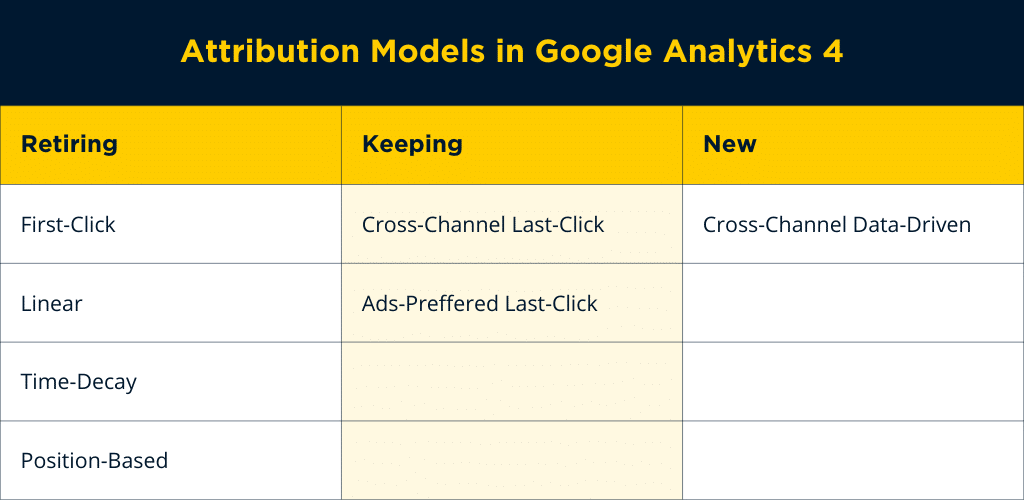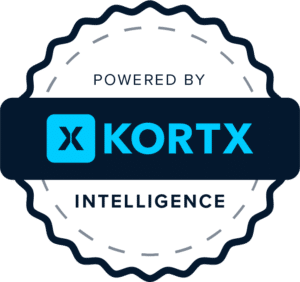Google’s recent announcement regarding the phasing out of first-click, linear, time-decay, and position-based attribution models has caused quite a stir in the world of digital marketing. These models have been the go-to for many businesses when it comes to tracking and measuring the effectiveness of their marketing channels via Google Analytics.
However, with the rise of machine learning and data-driven attribution models, it’s becoming increasingly clear that these older models are no longer enough to keep up with the rapidly changing digital landscape.
📊 What attribution models do businesses require for informed marketing decisions in 2023? 📊
“As the digital landscape evolves, businesses need more advanced and data-driven attribution models to make informed decisions about their marketing strategies. The rise of machine learning and data-driven attribution models has made it clear that these older models are no longer enough to keep up with the rapidly changing digital landscape.”
-Damon Henry, Founder, KORTX
In this blog post, we will cover Google’s phasing out of traditional attribution models in favor of more advanced and data-driven models for better marketing results. Keep reading to learn what attribution models will be retired, which ones are staying, and why Google Analytics’ new attribution model is an improvement.
📌 What is an attribution model?
Attribution models help businesses determine which channel played the most significant role in that conversion and allocate credit accordingly. Attribution models are used to track the customer journey and assign credit to different marketing channels for each conversion. For example, a customer might click on a Facebook ad, then later click on a Google search result before finally making a purchase.
Universal Analytics Attribution Models Being Phased Out
The four models being phased out this year have been popular for a long time, but they do have some limitations.
- First-Click Attribution: First-click attribution, for instance, assigns all credit for a conversion to the first touchpoint, but ignores the impact of subsequent interactions throughout the conversion funnel.
- Linear Attribution: Linear attribution, on the other hand, divides credit equally among all touchpoints, which may not accurately reflect their relative impact on conversions.
- Time-Decay Attribution: Time-decay attribution gives more credit to touchpoints that occurred closer to the time of the conversion, which may not account for the impact of earlier touchpoints.
- Position-Based Attribution: Gives the majority of credit to the first and last touchpoints, but diminishes the impact of intermediate touchpoints.
‼️ All of your reporting in one spot.
Say goodbye to hours wasted on tedious tasks and embrace the power of time-saving efficiency with KORTX custom reporting & dashboards.
|
Why is Google Phasing Out These Models?
While these models have been useful in the past, they don’t take into account the complex nature of the customer journey in today’s digital landscape. With the rise of multiple touchpoints, cross-device behavior, and different attribution windows, businesses need more advanced and data-driven attribution models to accurately track their marketing effectiveness.
📌 What is a customer touchpoint?
Customer touchpoints refer to any time a customer (or potential customer) interacts with your brand. These interactions can occur across social media channels, search engines, websites, television and more. Many marketers believe a customer will experience 8+ touchpoints with a brand before making a purchase or decision.
Attribution Models Moving to Google Analytics 4
- 🆕 Cross-channel data-driven attribution: This attribution model takes into account all touchpoints in a customer’s journey, including those across multiple channels and devices, to attribute credit to each touchpoint that contributed to a conversion. It uses machine learning algorithms to analyze vast amounts of data and assign a value to each touchpoint based on its impact on the customer journey.
- Cross-channel last-click: This attribution model attributes credit for a conversion solely to the last touchpoint the customer interacted with before converting. It doesn’t take into account any other touchpoints in the customer journey, which may have also played a role in the conversion. This model is simple and easy to implement but may not provide a comprehensive view of the customer journey.
- Ads-preferred last-click: This attribution model is similar to cross-channel last-click, but it only attributes credit to the last ad the customer clicked on before converting. This model is useful for advertisers who want to prioritize the performance of their ads and optimize their ad spend based on the last ad the customer interacted with. However, it doesn’t provide a complete picture of the customer journey and may undervalue the impact of other touchpoints.

What’s New? Google’s New Attribution Model
Google’s new attribution model, powered by machine learning, aims to address these issues. It takes into account all touchpoints in the customer journey, regardless of their position or time, and uses data to determine which channels played the most significant role in the conversion.
By using a data-driven approach, businesses can gain a more accurate understanding of which channels are working and which ones need improvement.
📌 What is different with Google’s latest attribution model?
The data-driven attribution uses advanced AI to understand the impact each touchpoint has on a conversion. This new data-driven approach will be the standard model of attribution for both Google Analytics and Ads.
📌 Is the new GA4 attribution model better?
This new attribution model from Google is a significant step forward for businesses looking to optimize their marketing efforts and optimizations within Google Analytics. With the old models, businesses may have been over-investing in certain channels and missing out on opportunities to improve others. Using a more advanced and data-driven model allows businesses to allocate their marketing budget more effectively and get better results from their marketing efforts in GA4.
An Analyst’s Perspective on Google’s Attribution Changes
KORTX Intelligence: Jeff Israel, Director of Analytics, KORTX

What are the benefits of the new Data Attribution Model?
Something I appreciate about Google’s data-driven attribution model is the AI at the center. This considers the paths of users that do not convert and looks at historical data to help decide how conversion credit should be divided between touchpoints. Those are factors that none of the traditional attribution models can consider. Promoting the DDA (data-driven attribution) model to a greater extent via this move will allow marketers to take advantage of a more holistic approach to attribution.
What are the challenges?
There are a few challenges that some marketers will face as a result of this move. Suppose you previously utilized positional, time-decay, and/or first-touch attribution in your reporting. In that case, comparing historical data against future data using the DDA model will not be apples to apples. While there is a general understanding of how Google’s DDA model works and the factors it focuses on, due to its reliance on AI, it is not as simple to explain and describe as the traditional (retiring) models. The DDA model is a bit of a black box.
How should marketers test the new DDA?
In my opinion, a good next step for marketers that have not yet utilized Google’s data-driven model is to run tests to determine its effectiveness in helping to guide important marketing mix decisions. As is the aim of the more traditional multi-touch attribution models, the DDA model should help marketers make impactful optimizations that improve KPI performance. If, after some time, with the DDA model in place, you notice that certain marketing channels outperform others according to the model, you should look to shift budgets accordingly. Compare the pre and post-optimization results to determine if the optimization(s) based on the DDA model data led to improvement.
Remember that no marketing test is perfect due to unpredictable external factors that can influence results.
Better Attribution, Better Marketing?
As the digital landscape continues to evolve, businesses need more advanced and accurate attribution models to make informed decisions about their marketing strategies. With the new machine learning-powered attribution model, businesses can gain a more accurate understanding of their customer journey and optimize their marketing efforts for better results.
Which Attribution Model is Right for Me?
KORTX can help your team determine which attribution model will work best.. Just ask! Our Google Analytics Services team is happy to help!
even help you pick the best attribution model for you.
|
Josh Pettovello is a University of Michigan graduate who enjoys all things data, SEO, and nerding out.
